Aviation against tanks (part of 20)
Combat experience with the use of French light anti-tank helicopters Alouette III and SA.342 Gazelle demonstrated that they have a chance of success in the event of a sudden attack, and not entering the enemy's air defense zone. Light, uncovered armor cars were very vulnerable and could be easily knocked down even by manual fire. weapons. In this regard, in France in the 80-e years, work was carried out to create new anti-tank helicopters with improved flight performance and equipped with more advanced aim-navigation complexes.
To replace the Alouette III in 1976, Aerospatiale SA.360 Dauphin (Russian Dolphin) was created. The car was not too successful and did not use the demand from buyers. Turbomeca Astazou XVIIIa engine with power 980 HP accelerated the helicopter with a maximum take-off weight of 3000 kg to 270 km / h. Practical range - 640 km. According to flight data, this helicopter did not have any special advantages over Aluet and Gazelle according to flight data. As in the Gazel, the Dauphin used a fenestron-type steering screw.
The variant, known as SA-361 HCL (Helicoptere de Combat Leger - Rus. Army Combat Helicopter), was equipped with an advanced infrared night vision system HGT TRT, a SFIM APX M397 gyro-stabilized sight and SFIM television equipment Venüs. Compared with the sighting and search system installed on the Gazelle, the equipment could effectively search for targets in poor visibility conditions or at night. As the main weapons used ATGM NOT.
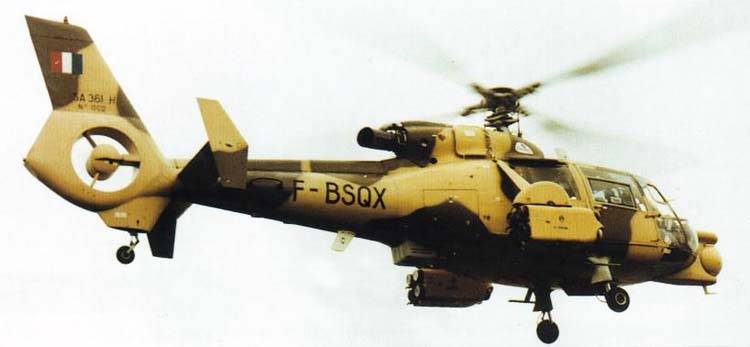
The SA-361H / HCL helicopter became a kind of “flying stand”, on which the modern avionics were tested as part of the concept of a light reconnaissance and attack helicopter. To the French Army Aviation transferred several SA-361H / HCL. It was believed that these vehicles, capable of carrying eight ATGMs and equipped with an all-day surveillance and sighting system, in addition to fighting tanks, will lead the anti-tank Gazelles.
Using a number of technical solutions SA.360 Dauphin was developed by SA 365 Dauphin 2. Helicopter operations began in December 1978. Unlike the SA.360, the “Dolphin-2” fully justified its name, the helicopter had an elegant, streamlined fuselage and retractable landing gear. What in combination with two engines is the Turbomeca Arriel 2C, with the take-off power of the 838 HP. each, and the four-bladed main rotor allowed to accelerate the helicopter in horizontal flight to 306 km / h. A “Dolphin-2” with a maximum take-off weight of 4300 km could cover the distance 820 km without landing. From the very beginning, even for civilian vehicles, the duplication of hydraulic systems and the possibility of flying on one engine were provided. An electric generator is paired with each engine, uninterrupted power supply is also provided by the main and backup nickel-cadmium batteries. The various parts of the rotary-wing aircraft are made of composite materials. In a large nose cone can be placed various electronic equipment, including radar or optoelectronic surveillance systems.
The SA 365 Dauphin 2 helicopter turned out to be a commercially successful machine, it was popular with both civilian and military users. In total, more than 1000 helicopters were delivered to customers. At the same time, the cost of the new car in 2000 reached $ 10 million.
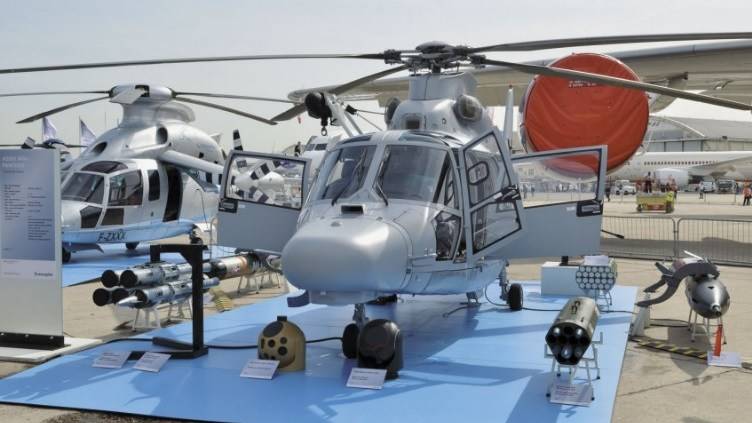
The military transport and combat version of the Dauphin 2 is known as AS 365M Panther. His first flight took place on February 29 1984. The Panther can take up to 10 paratroopers with personal weapons. The transport-combat helicopter has partial armor protection of the cockpit against rifle bullets and protected fuel tanks. Due to the wider use of composites, special paint and heat dissipating screens, it was possible to reduce radar and thermal visibility.
The payload capacity of the Panther is 1700 kg, of which 480 kg can be placed on the outer side arms. Although the armed versions of the Panther were used mainly as a transport assault, patrol and anti-submarine, a number of helicopters were equipped with anti-tank systems.
The AS 565CA combat helicopter is equipped with an Venus front-view infrared system and is capable of carrying eight ATGM NOot or TOW, GIAT M20 621-mm guns or 68-70-mm HAR blocks. The maximum speed due to the increased resistance of the external suspension dropped to 280 km / h. This modification is mainly intended for escorting helicopters, used "commandos" and participation in special operations. As part of the program to upgrade, improve defensive and offensive capabilities, the helicopter received a new glass cockpit compatible with night vision goggles, electro-optical sensors detecting launches of anti-aircraft missiles, automated data transmission equipment Link 11, self-defense systems similar to those used on a Eurocopter combat helicopter Tiger. In May, the 2011 of the Air Force Support Squadron of the 9 Brigade of the Marine Corps of the French Navy received the first two of the 16 ordered combat helicopters. Along with the Tigr attack helicopters, the upgraded Panthers, equipped with ATGM systems, can be part of the UDC Mistral air group.
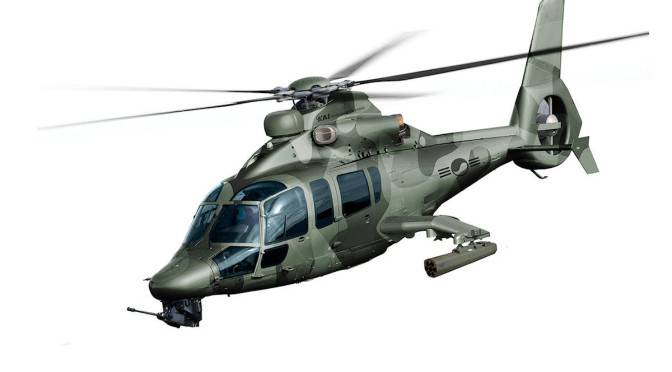
Estimated appearance of the reconnaissance-attack helicopter participating in the South Korean LAH program
The latest version of "Panther" took part in the South Korean competition for a light reconnaissance-combat helicopter LAH. The machine must be equipped with engines of increased power, millimeter-wave radar, 20-mm turret gun and Israeli Spike ATGM.
Based on the Aérospatiale Dauphin 2, the Chinese aviation corporation Harbin Aircraft Manufacturing Corporation created a combat helicopter Z-9. The licensed assembly of the French components at the aircraft plant in Harbin began in the middle of the 80-x. The armed version became known in the early 90-x. Initially, Z-9 was intended only to provide fire support and carried the appropriate armament: blocks with 57-90-mm NAR, containers with 12,7-mm machine guns and 23-mm guns. In the future, a licensed copy of the French helicopter underwent a major revision. Modification Z-9W was the first anti-helicopter helicopter, created in China. For the first time, an option equipped with four HJ-8E anti-tank guided missiles and an aiming-viewing gyro-stabilized system installed in the upper part of the cab was demonstrated in 1998 year.
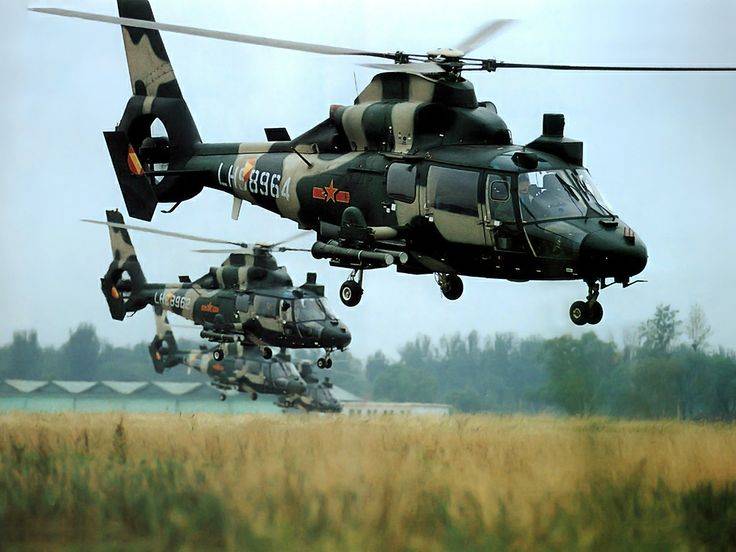
In fact, it is a transport-combat vehicle with very limited anti-tank capabilities. The main purpose of the armed Z-9W was to support the landing of assault forces and combat armored vehicles in good visibility conditions. In many ways, this helicopter is a functional analogue of the Soviet Ka-29.
A number of English-language sources indicate that the HJ-8 anti-tank missile, weighing 24,5 kg, is a Chinese copy of the BGM-71 TOW. But in fairness, it is worth saying that the ATGM created in China is more similar in layout to the Soviet “Malyutka” enlarged in size.

The HJ-8E ATGM, launched from a tubular container with a diameter of 120 mm, is controlled by wire using a semi-automatic guidance system. With an average flight speed of 220 m / s, the launch range reaches 4000 m. The armor penetration rate of the cumulative warhead is 800 mm of homogeneous armor. There are also options with tandem, high-explosive and thermobaric warheads. On modern versions of the HJ-8 ATGM, laser-guided homing systems are used. Thanks to the use of a compact element base, the mass of the rocket is reduced to 22 kg.
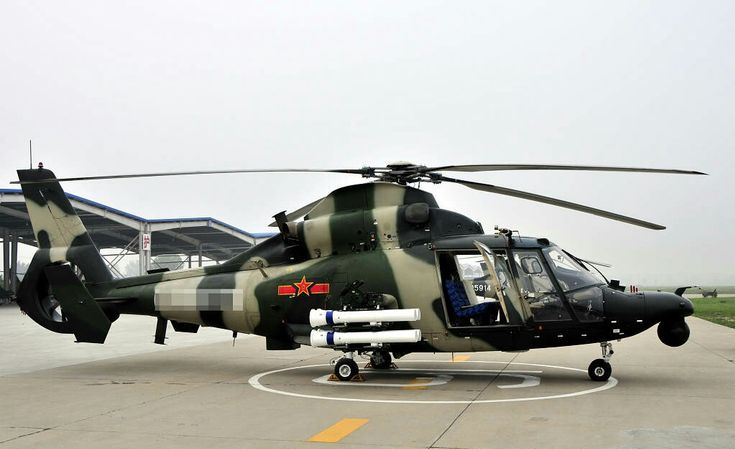
In 2011, the night modification of the Z-9WA was officially presented. The helicopter is equipped with a night vision system, in its capabilities close to the American FLIR, as well as a new laser range finder-target designator. At the disposal of the crew appeared multifunctional flat displays and a system for displaying information on the windshield.
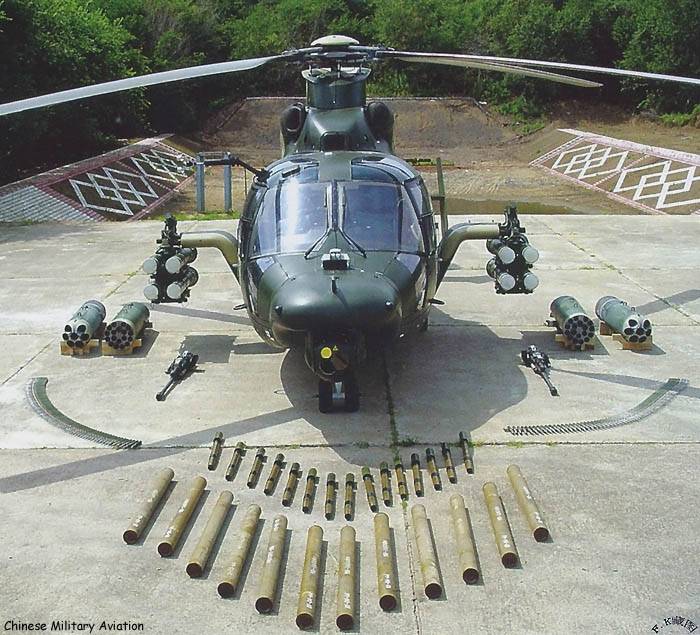
The structure of weapons Z-9WA entered the HJ-9 ATGM with laser-guided. The HJ-9 rocket is considered a development of the HJ-8, but has a caliber of 152-mm and a mass up to 37 kg. Tandem warhead capable of penetrating 900 mm armor at a distance of up to 5000 m.
The real characteristics of the latest Z-9 variants, intended for “domestic consumption”, are not reliably known, since the supply of helicopters with Chinese-made WZ-2003 engines with take-off power of about 8 hp began in the PLA 1000 year. Despite the expiration of the license agreement, the serial construction of multifunctional helicopters created on the basis of the French Delphine continues, which has become the subject of disputes between France and the PRC.
Being a very successful transport and combat vehicle, AS 565CA still could not count on successful operations in the zone of a strong military air defense. In its appearance and concept of use, the Panther is in many ways similar to the Italian helicopter, Hirundo. As a result, the command of the French Ministry of Defense, as well as the Italian military, came to understand the need to create a well-protected attack helicopter, equipped with an aiming and navigation complex, providing piloting, independent search for targets and the use of guided missiles at night and in adverse weather conditions. However, to draw a program to create a combat helicopter, comparable in efficiency to Apache, due to limited financial resources, France alone could not. After winding up the joint French-Italian combat helicopter, the French company Aerospatiale and the West German Messerschmitt-Bölkow-Blohm in 1984 entered into an agreement to begin the design of a promising attack helicopter. Since the views of the French and German military on the composition of the avionics and weapons significantly diverged, there should have been a common platform on which each side could install equipment and weapons at its own discretion.
Since the Federal Republic of Germany was directly threatened by a large Soviet tank group, the West German Bundesluftwaffe needed an anti-tank helicopter capable of operating around the clock in conditions of strong anti-aircraft resistance. The command of the French Armee de l'Air would like to get a relatively light and simple in design machine, quite cheap in production and possessing good export potential. The helicopter, intended for the French army aviation, did not have strict requirements for all-weather and daily use, in fact, the French wanted to get first of all a rotor-wing armored attack aircraft designed to provide fire support, escorting troop helicopters and combat enemy combat helicopters. At the same time, the parties came to the general opinion that even despite the increase in the cost of the program, it would be a well-protected helicopter, the design of which was supposed to use the latest achievements in the field of creating composite armor, and developments in reducing radar and thermal conspicuity. Noise is also reduced to a minimum, according to this indicator the “Tiger” was later able to surpass the rather “quiet” AH-64D Apache. When creating the helicopter, the latest technical advances in materials science were used: composites, Kevlar, elastomeric bearings, fiberglass, carbon fiber reinforced plastics, etc. In the design of the "Tiger" is very high proportion of modern lightweight composite materials and carbon fiber (about 75%), approximately 18% by weight falls on alloys of aluminum, magnesium and titanium. When designing a European attack helicopter, due to the use of modern construction materials and the use of specially created innovative graphics programs for computer calculations, high weight perfection was achieved. In this case, the strength of the "Tiger" is not inferior to other existing models of combat helicopters. Operational overload is within: + 3.5 / -0,5 G.
The fuselage, made of composites, was supposed to keep hit single 23-mm high-explosive fragmentation projectiles. Protected fuel tanks with a total capacity of 1360 l are designed to hit 14,5-mm armor-piercing bullets. The cockpit is quite narrow, its width is about 1 meter, which should reduce the likelihood of frontal projection hit by anti-aircraft fire when approaching the target. The windshield of the cab is able to withstand 12,7-mm bullets, and the side is guaranteed to hold armor-piercing bullets rifle caliber, vypushannye to stop. To increase the security of the cabin, the use of additional removable combined armor and sliding armor casters of the operator and pilot is provided. The helicopter pilot is located in the first cockpit, and the weapon operator is above and behind it. The operator also has a helicopter controls. Channels of the helicopter electric remote control system are double redundant. The complex of measures of combat survivability includes the duplication of vital units and shielding them with less important ones, as well as the presence of an armored partition between the engines. Since one of the most vulnerable points of a combat helicopter is a tail boom with a tail rotor, the tubular power shaft of the tail rotor with a diameter of 130 mm is made of carbon fiber-reinforced ballistic-resistant polymer material. The standard requirement was the ability to continue flying for 30 minutes after the lubricant leaked from the gearbox. Stated that the two-stage gearbox is able to withstand the blows of 12,7-mm bullets. Initially, four blades carrying an articulated screw with a diameter of 13 meters were designed for the 23-mm armor-piercing projectile chamber, but later the developers were able to guarantee the preservation of performance only in the case of penetration of 14,5-20-mm ammunition. The shock absorbers of the chassis and seats should ensure the survival of the crew in the fall at speeds up to 11,5 m / s. Of the currently existing combat helicopters "Tiger" is best protected from lightning strikes and electromagnetic pulses. This is achieved thanks to a solid screen of fine-meshed copper mesh, bronze foil and a metallized coating of the glass of the cabin.
In the second half of the 80-x program to create a "European" combat helicopter was threatened with closure. The governments of France and Germany refused to finance the necessary research and development of advanced electronic systems. In addition, the United States actively imposed on the allies AH-64 Apache. At the same time, there were no guarantees that the Franco-German attack helicopter would be able to surpass or at least equal in combat effectiveness with the Apache. However, considerations of national prestige and the need to develop our own scientific, technological and industrial base forced the French and Germans to continue research. In the period from 1985 to 1987, the development of avionics was carried out by Thomson CSF at its own expense. Only in 1989, did the governments of the participating countries of the program reach a formal decision regarding development and financing. To create a promising combat helicopter in 1992, the Franco-German consortium Eurocopter Group was formed. The head office of the company is located on the territory of Marseille Provence Airport in France.
Google Earth satellite image: Tiger attack helicopter in the territory of the helicopter-building enterprise in Marignane
The main production facilities of the company are located in Marignane. The German branch of Helicopters Deutschland GmbH is located in Donauwörth. In the event of its success, the United Kingdom was ready to join the program, for this it was planned to create a modification with weapons and British-made avionics. However, the end of the Cold War and the collapse of the Warsaw Pact almost caused the closure of work. However, by that time, much of the development work was completed, and on 27 on April 1991, the first prototype of a combat helicopter made a half-hour flight. But due to lower priority and reduced funding, the pace of construction of prototypes has seriously slowed down. During the flight tests in 1994, it turned out that both the engines themselves and their control equipment need substantial improvement. The equipment of the digital automatic flight control system did not work reliably. The main screw and the rotor were subject to increased vibration. Only at the end of 1996, the final decision was made to start mass production. By that time, due to the uncertainty of the prospects for Eurocopter, the British chose Apache.
In June 1999, the military departments of France and the Federal Republic of Germany placed an order for 160 copies of the Tiger in the 3 versions. The first deliveries of serial helicopters to the line units began in March 2005. The most inexpensive modification of the EC665 Tiger HAP in 2012 cost the French army $ 36 million. By the end of 2009, 50 Tigers were deployed to the troops and spent more than 13000 hours in the air.
Google Earth satellite image: Tiger attack helicopter near Mirage 2000 fighter at Clermont-Ferrand airbase
Due to the large share in the design of the fuselage of composite materials, carbon fiber and titanium, and relatively small size, the maximum take-off weight of the "Tiger" is about 4 tons less than AH-64D. The Eurocopter prototype was equipped with two MTU / Turbomeca / Rolls-Royce MTR 390 turboshaft engines with a take-off power of the 1100 hp. However, later the power of the engines on serial helicopters was brought to 1464 HP. In emergency mode, the power can reach the 1774 hp value for a short period of time. The Tiger HAP with a maximum take-off mass of 6000 kg has a combat radius of 400 km, and is capable of accelerating in horizontal flight to 315 km / h. Cruising flight speed - 271 km / h.
On the basis of one basic Eurocopter design, it was decided to build three helicopters for various purposes, differing in the composition of the avionics and armament. For the French Army Aviation was intended multi-purpose version of the Tiger NAR (Helicoptere d'Appui Protection - Russian. Helicopter support and protection). This vehicle, armed with 68-mm unguided rockets, suspended gondolas with 20-mm cannons and Mistral or FIM-92 Stinger air-to-air missiles, must provide ground support for the air forces or escorting anti-aircraft and anti-tank helicopters to protect them from fighters and enemy combat helicopters.
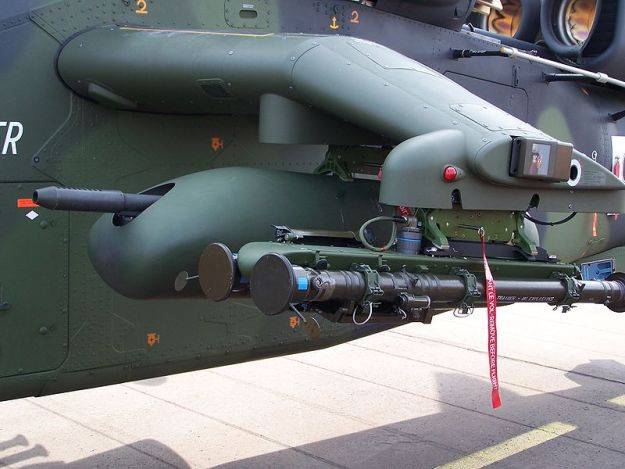
20-mm suspension gun and launchers FIM-92 Stinger on the nodes of the suspension of the helicopter Tiger NAR
The command of the French Army Aviation is considering helicopters modification Tiger NAR as a means of dealing with the enemy air. At the same time, in the course of training crews of combat helicopters, a lot of time was allocated for practicing air combat skills. Due to the excellent maneuverability of the helicopter can quickly take a favorable position to attack the air target. Combat helicopter "Tiger" is able to perform aerobatics, including the "barrel" and "dead loop."
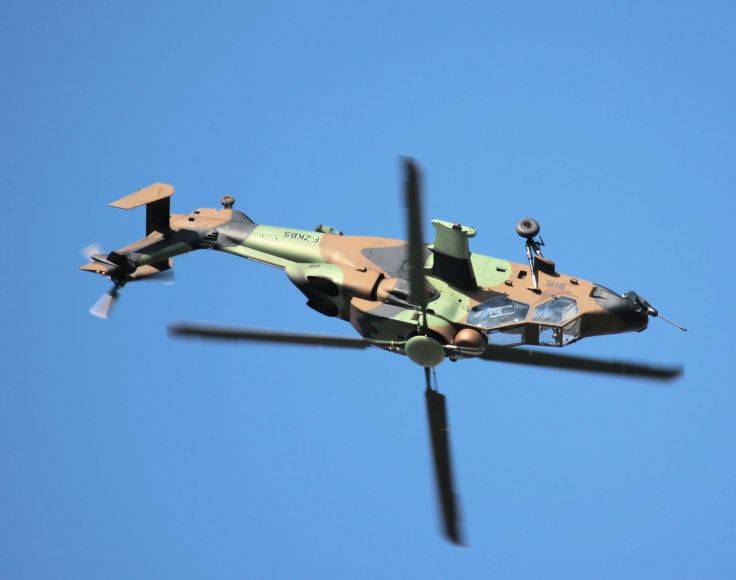
Tiger HAC (Helicoptere Anti-Char - Russian. Anti-tank helicopter) was intended to combat armored vehicles and replace anti-tank "Gazelle" and "Panther". West German combat helicopter received the designation Tiger PAH-2. From the very beginning, its armament should have included an ATGM NOT-3. All variants of the "Tiger", except German, were armed with 30-mm turret gun GIAT 30М-781 with ammunition to 450 shells.
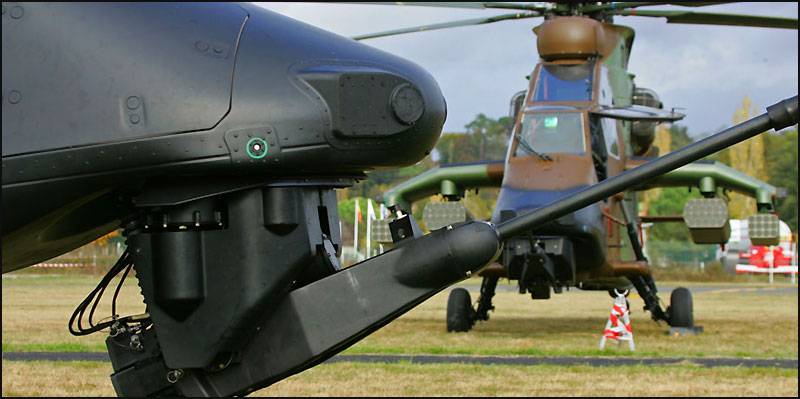
Aviation gun GIAT 30 is designed to replace the DEFA 550 with vapor-automatic. Unlike its predecessor, the GIAT 30 automatics is electrically operated. The weight of the gun without ammunition and targeting drives is 65 kg. 750 firing rate / min. The initial speed 244 g armor-piercing projectile - 850 m / s. The gun turret is controlled using a helmet-mounted sight. On German helicopters, the helmet-sight from the British company BAe is used only for targeting ATGM and NAR. The French use an HMS sight, developed by Thales TopOwl Avionique. Accuracy of firing from a cannon is very high, the ability to shoot down air targets with short bursts flying at near-sonic speed at a distance of about a kilometer and hit single 30-mm projectiles into growth targets was repeatedly demonstrated at the test site.
Since the "Tiger" was developed relatively recently, from the very beginning it was equipped with a very advanced avionics. The crew has stabilized sighting and viewing infrared and television systems, FLIR night-vision equipment (Forward Looking Infrared - Rus. Infrared front view system), helmet-mounted binocular sights and flight information indicators on the windshield.
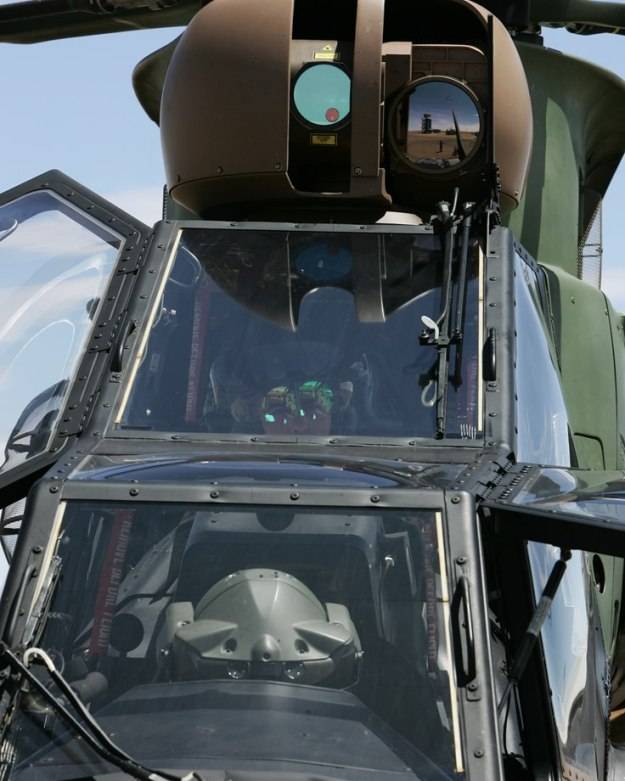
The central element of the French Tiger search and sighting system is the Strix stabilized optoelectronic platform manufactured by the French company SFIM Industries. A movable sphere with optoelectronic sensors and lasers is installed above the armament operator’s cab. In addition to the thermal imager, a high-resolution television system with day and night optical channels, the Strix equipment includes a laser range finder, which can simultaneously illuminate several targets. At a distance of 9 km, it measures the distance with an accuracy of ± 5 m.
Tiger became the first production helicopter, on the dashboard of which the very first production model installed multifunctional LCD displays of size 15,2x15,2. Helicopters can exchange information with each other and with ground control points over a high-speed, secure digital radio channel. To protect against ground-based air defense systems and enemy fighter aircraft, Tiger family helicopters are equipped with equipment manufactured by EADS Defense Electronics. The signals from multi-frequency radar warning receivers of RWR equipment and laser radiation warning sensors LWR are analyzed by an on-board computing system. In this case, the azimuth is determined and irradiation occurs from above or below. The anti-aircraft and air-to-air missile launches are fixed using the AN / ААР-60 system sensors. Based on the nature of the threat, the helicopter crew decides on the construction of an evasion maneuver, the use of electronic jamming equipment, heat and radar traps.
In the course of mass production in 2012, the French army aircraft received an improved version of the Tiger HAD (Hélicoptère d'Appui Destruction - Russian. To fight with helicopters). Despite the name, it is rather an anti-tank version, equipped with American AGM-114K Hellfire II laser-guided anti-tank guided missile systems with Israeli-guided or Israeli Spike ER.
It is reported that this modification has enhanced cockpit protection and MTR390-E engines with 1668 hp takeoff power. "Tigers" of this model are also supplied to Spain. The Australian Army to replace the OH-58 attack drums Kiowa ordered the Tiger ARH 22 helicopter. They differ from Tiger HAD in the composition of connected and navigation equipment; instead of French 68-mm NAR SNEB, Australian machines use 70-mm NAR of Belgian production, which are similar to the American Hydra 70 projectiles. In the near future, the Cnite 70-mm Cirit or ACULEUS LG laser-guided 68-mm missiles are to be loaded into the French Tiger HAD.
Before 2023, France plans to upgrade all Tiger NAR version helicopters to the level of Tiger HAD Mark II. After the upgrade, it will be possible to use AGM-114K Hellfire II, Cirit or ACULEUS LG missiles, as well as the navigation and communications equipment will be updated. Through the use of engines MTR390-E will increase the speed and maneuverability. Much of the engine power reserve is aimed at increasing security. Thus, it is planned to significantly increase the thickness of the side armored windows of the cockpit and operator. In total, the version of the Tiger HAD Mark II should be redone 67 helicopters. After 2025, it is planned to begin serial construction of the Tiger HAD Mark III modification. It is assumed that this vehicle can be equipped with a radar with a bobbin antenna. This will increase the informational awareness of the crew and will enable the use of radar-guided anti-tank guided missiles in the “fired and forgotten” mode. The possibility of using American radar AN / APG-78 is currently being investigated. However, critics of the modernization program point to its excessive cost, since only the cost of the American millimeter-wave radar exceeds $ 2 million. Already, the cost of one Tiger HAD Mark II is more than $ 50 million. Currently, all rights to manufacture combat helicopters of the Tiger family are Airbus Helicopters.
In March, an agreement was signed between the German government and Eurocopter for the delivery of 2013 helicopters of the UH Tiger modification (Unterstützungshubschrauber Tiger - Russian support helicopter "Tigr"). The main purpose of the West German combat helicopter is to fight tanks, conduct air reconnaissance, adjust artillery fire and issue target designation to ground and aviation precision weapons systems. Due to the different views of the French and German military on the role of the "Tiger" in modern combat, the composition of the avionics and weapons Tiger HAD and UH Tiger are significantly different.
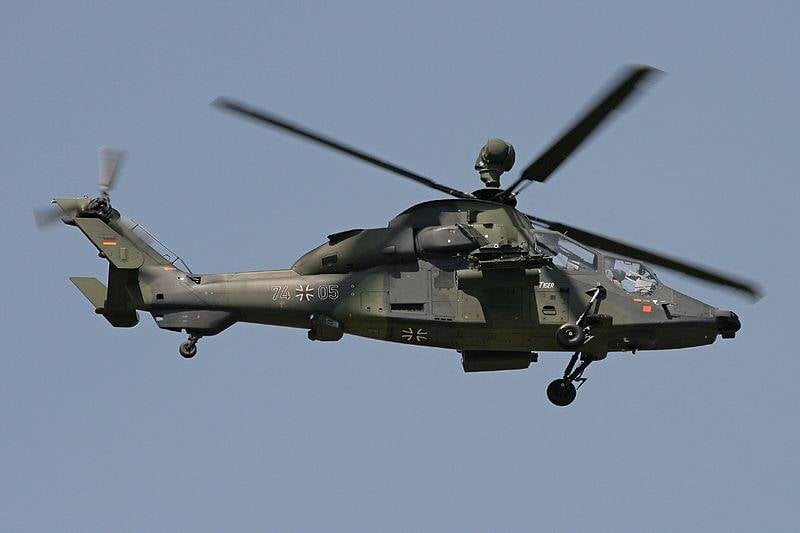
As already mentioned, the helicopters used in the Bundeswehr are devoid of 30-mm guns. Instead of a turret gun mount, FLIR night vision equipment was installed on German helicopters. Initially, the main weapon of the German flying "Tigers" were the ATGM NOT-3. However, currently obsolete wire-guided anti-tank missiles have been replaced with PARS 3 LR, which is also known as TRIGAT LR (Third-Generation Anti-Tank - the third-generation anti-tank missile). The deliveries of the PARS 3 missiles (Ranzerabwehr rakensystem 3 - Rus. The 3 anti-tank missile system) to the armed forces of the Federal Republic of Germany began in the 2012 year. The development of the rocket was conducted from 1981 by Messerschmitt-Bolkow-Blohm, Aerospatiale and BAe Dynamics.
ATGM PARS 3 LR weighs 49 kg and carries 9 kg tandem warhead with 1000 mm armor penetration. The launch range is up to 7000 m. Flight speed is about 300 m / s. In addition to the steering surfaces, the rocket is equipped with a device for changing the thrust vector, which provides excellent maneuverability. The guidance system is combined: television and heat, capable of operating in the "shot and forget" mode. Depending on the altitude, launch range and nature of the target, the onboard processor selects the optimal trajectory and flight altitude. Four missiles can be fired at different targets in 8 seconds. In addition to combat armored vehicles, anti-tank guided missiles can be used against air targets; there is a proximity fuze for this.
The UH Tiger helicopter is equipped with the Osiris nadpultochny reconnaissance and sighting system, which includes stabilization equipment, a highly sensitive thermal imager, a high-resolution television camera, and a multichannel laser range finder, a target indicator. The Osiris complex was developed by SFIM Industries and put into service in 2010. Overhead RPK has high performance. Thus, according to advertising data, the detection range of a television channel in the daytime and in conditions of good visibility is 55 km. With the help of an improved thermal imager, objects can be identified at distances up to 18 km. The laser rangefinder-pointer is capable of measuring the distance and highlighting the target at a distance of up to 27 km.
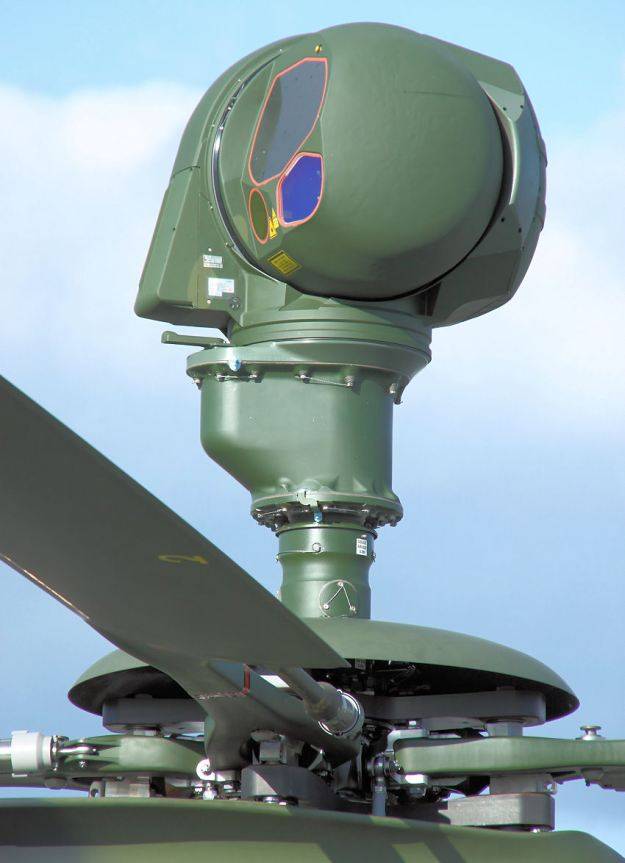
Search for enemy armored vehicles is possible while the helicopter is behind the shelter in the hover mode. At the same time, because of the crowns of trees, buildings, or natural elevations, only a ball with optoelectronic sensors looks out. After detecting and identifying a target, the distance to the object of impact is determined using a laser rangefinder. If the target is in the affected area, the weapon operator captures. After this, the instrumentation of the sighting system takes it to the automatic tracking through the thermal imaging channel. At the same time, the target of the IR-GOS rocket is captured. After the decision to open fire is made, the helicopter “jumps out” from the shelter, the missile seeker performs the final “stabilization” and an automatic launch takes place. Next, the ATGM is induced autonomously with the help of a thermal imaging homing vessel. The next rocket can be launched for the same or a different target, as soon as a seizure is made. According to the stated data, "Osiris" is able to issue target designation simultaneously for four purposes. The use of missiles is possible at any time of the day. At the same time, foreign experts point out that the real combat effectiveness of the rockets with the IK-GOS and sighting and search system may not be as high as stated. The performance of the Osiris equipment and the PARS 3 LR missile guidance process can be significantly influenced by weather factors, disturbances, masking devices and smoke. In addition to the ATGM NOT-3 and PARS 3 LR, the German UH Tiger is capable of carrying blocks with 70-mm NAR, containers with 12,7-mm machine guns and air combat missiles FIM-92 Stinger. Thus, a pronounced anti-tank anti-tank specialization is observed on the Bundeswehr helicopters, while the French Tigers are more versatile vehicles.
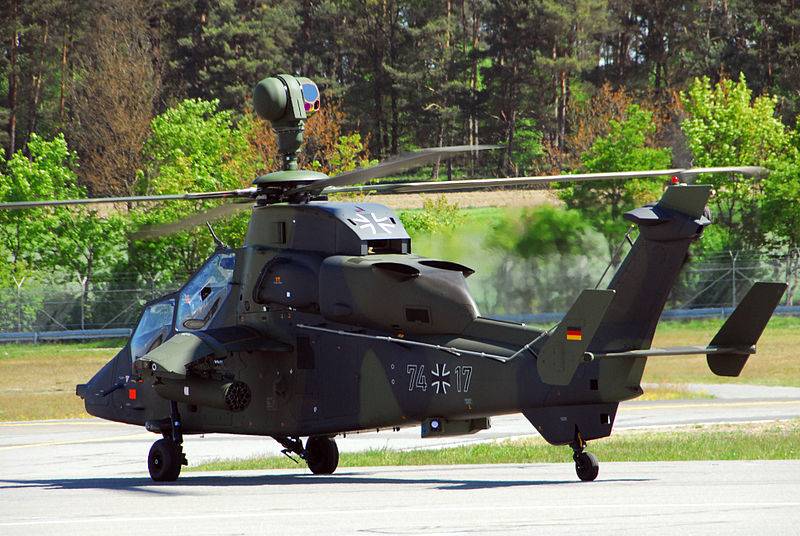
All UH Tiger combatant are part of the 36 th anti-helicopter regiment. After writing off the latest X-NUMX with the ATGM NOT, in the 2014, there were no other anti-tank helicopters left in the Bundeswehr. The home of the 105 regiment is Fritzlar Air Base in the northern part of Hesse. Compared with the French military helicopters, the German "Tigers" fly much less and most of the time idle in the hangars.
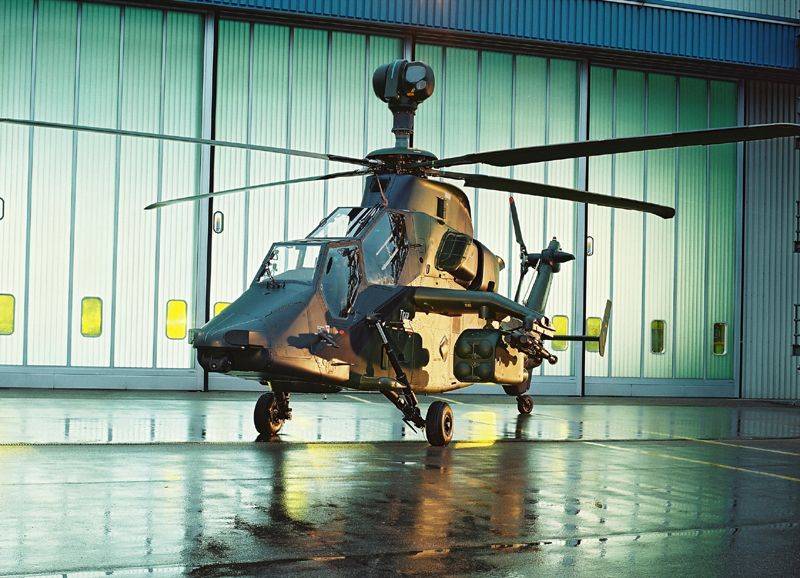
Up to year 2009, the helicopter avionics continued to be refined, and they were used mainly for training flights. Only in 2011, it was announced that the first batch of German "Tigers" had reached the "operational level of readiness." Nevertheless, the German magazine Der Spiegel wrote about the numerous technical problems and the low level of reliability of the equipment of UH Tiger helicopters. Most complaints were on the software compatibility of search and targeting systems and weapons, as well as on the work of the EDSU. In this regard, the representatives of the company Eurocopter stated that they had agreed with the customer a set of measures to remedy the situation, the modernization program was named ASGARD. In 2012, the main claims of the military were eliminated, and four “Tigers” were deployed at the Mazar-i-Sharif air base in Afghanistan.
From 30 in January 2013 of the year to 30 in June of 2014, the helicopters made more than 260 flights, having spent hours in the 1860 air. They were involved mainly for conducting air reconnaissance, patrolling, escorting convoys and transport helicopters. Despite the fairly intensive use, the crews of German attack helicopters never used weapons in Afghanistan. In March 2017, two German "Tigers" were deployed in Mali as part of a UN peacekeeping operation. 26 July 2017, one of the two German "Tigers" for an unknown reason, crashed in the desert 70 km north of Gao, both pilots died as a result of a helicopter crash.
Unlike the Bundeswehr, the French armed forces quite actively exploit their combat helicopters and use them in combat. In July 2009, three French Tiger HAP arrived at Kabul International Airport. The French "Tigers" along with the American and British "Apaches" participated in combat operations against the Taliban, conducted armed reconnaissance and provided fire support to ground units, having spent more than 1000 hours in the air.
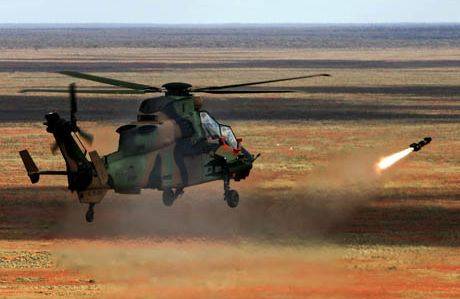
In some cases, Hellfire guided missiles with a thermobaric warhead were used to destroy vehicles and buildings occupied by the enemy. February 4 The 2011 of the year Tiger HAP crashed during a night combat departure in 40 km east of Kabul, both crew members escaped with minor injuries and were promptly evacuated by an American search and rescue helicopter.
In the 2011 year, during the intervention against Libya, four “Tigers” operated from the deck of the UDC Tonnerre (L9014) of the type “Mistral. At the same time, the British used their WAH-64D Apache in parallel with the HMS Ocean helicopter carrier. At the end of the operation, a NATO spokesman, Colonel Thierry Burckhard, said that the crews of French military helicopters managed to destroy a dozen units of armored vehicles and five stationary targets.
In January, 2013, France intervened in the internal conflict in Mali. Several Tiger HAP and SA.342 Gazelle took part in the hostilities in the framework of Operation Serval, who attacked the positions of the Islamists and destroyed their vehicles.
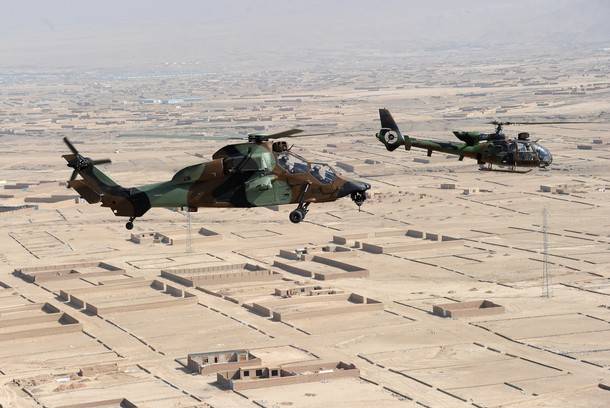
It is reported that as a result of the actions of combat helicopters, up to two hundred militants and three dozen trucks and armed off-road vehicles were destroyed. At the same time, as a result of the shelling from the ground, one pilot of the anti-tank Gazel was killed, and the helicopter itself was subsequently written off due to multiple damage. "Tigers" also had damage from small arms fire and heavy machine guns, but this did not lead to serious consequences. The fighting in Mali at a certain stage had a wide scope and was marked by fierceness. On the basis of combat experience, the French military concluded that, despite forecasts, armed unmanned aerial vehicles are not yet capable of replacing armored combat helicopters. In those cases when it was necessary to launch a volley of several dozen NARs or hit a point target with a cannon under anti-aircraft fire, the Tigers were out of competition.
Despite the high flight data and a very advanced design, as of the middle of the 2017 of the year, the entire 135 Tiger series combat helicopters were built. Although it is at least not inferior in terms of security, and according to flight data it surpasses the American Apache, the Eurocopter helicopter still loses AH-64D / E in terms of combat capabilities at a comparable cost to the new car. The crew of the Franco-German combat helicopter is not yet capable of directing UAV operations in flight and receiving intelligence information from them. In addition, there is still no millimeter-wave radar on board the Tigra, which in turn reduces intelligence capabilities and prevents the use of guided missiles with radar guidance. As you know, the main advantage of the “Hellfire” with radar seeker is the possibility of multichannel use, and the implementation of the “released and forgotten” mode regardless of weather conditions. The main reason for the small number of built "Tigers" is the end of the "cold war" and too long a period of development and adoption. That is why the Eurocopter was abandoned by the Netherlands and the UK. And the very high cost, combined with costly maintenance, makes it unattractive for foreign buyers.
To be continued ...
Based on:
http://airwar.ru/enc/ah/pah2.html
http://airheadsfly.com/tag/panther/
https://www.globalsecurity.org/military/world/europe/tiger-variants.htm
http://jsonpedia.org/annotate/resource/html/en:GIAT_30
http://www.planobrazil.com/ah-x-br-airbus-helicopters-ec-665-tiger/
https://thaimilitaryandasianregion.wordpress.com/2015/11/08/
https://pt.dfns.net/2015/02/10/ah-x-br-airbus-helicopters-ec-665-tiger/
https://forums.eagle.ru/showthread.php?t=146719
http://www.army-technology.com/projects/lr_trigat/
http://www.bnti.ru/showart.asp?aid=510&lvl=09.01.
http://www.naval-technology.com/projects/mistral/
http://www.foxnews.com/world/2011/06/04/nato-uses-attack-helicopters-for-first-time-in-libya.html?test=latestnews
- Linnik Sergey
- Aviation against tanks (part of 1)
Aviation against tanks (part of 2)
Aviation against tanks (part of 3)
Aviation against tanks (part of 4)
Aviation against tanks (part of 5)
Aviation against tanks (part of 6)
Aviation against tanks (part of 7)
Aviation against tanks (part of 8)
Aviation against tanks (part of 9)
Aviation against tanks (part of 10)
Aviation against tanks (part of 11)
Aviation against tanks (part of 12)
Aviation against tanks (part of 13)
Aviation against tanks (part of 14)
Aviation against tanks (part of 15)
Aviation against tanks (part of 16)
Aviation against tanks (part of 17)
Aviation against tanks (part of 18)
Aviation against tanks (part of 19)
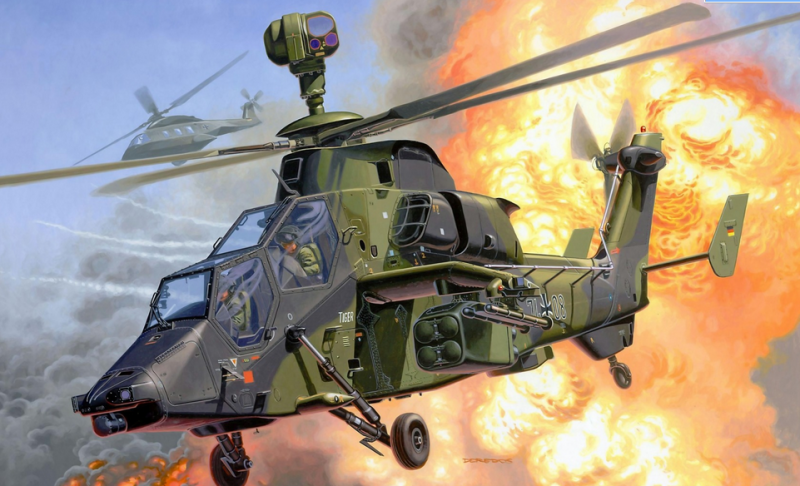
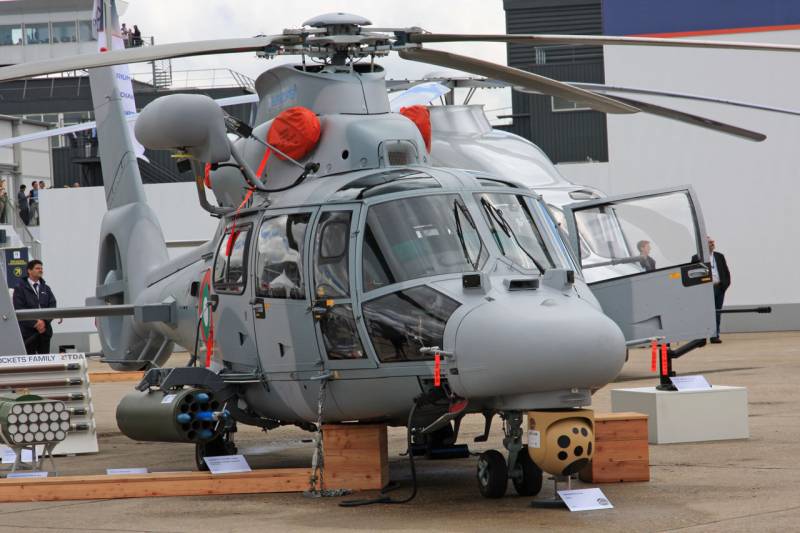
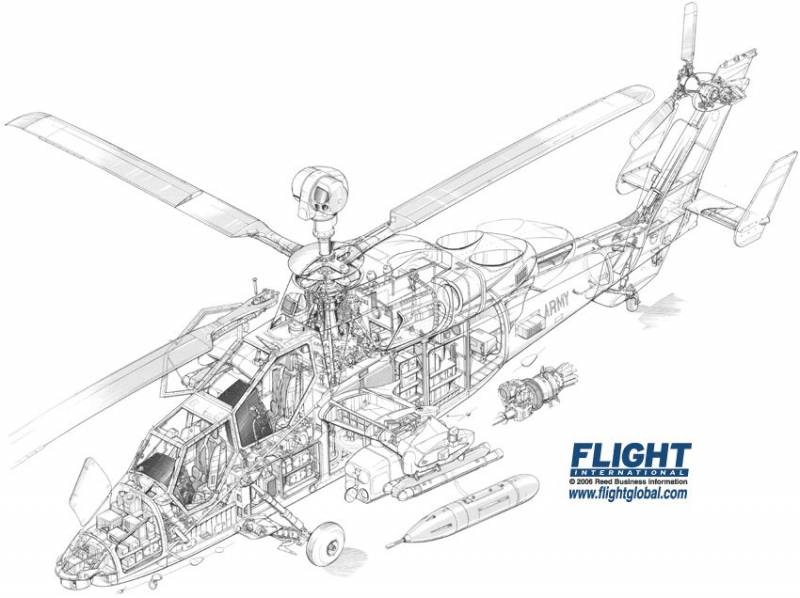
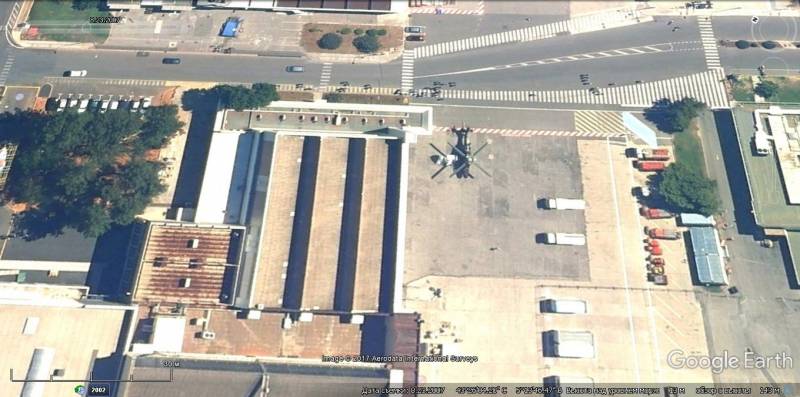
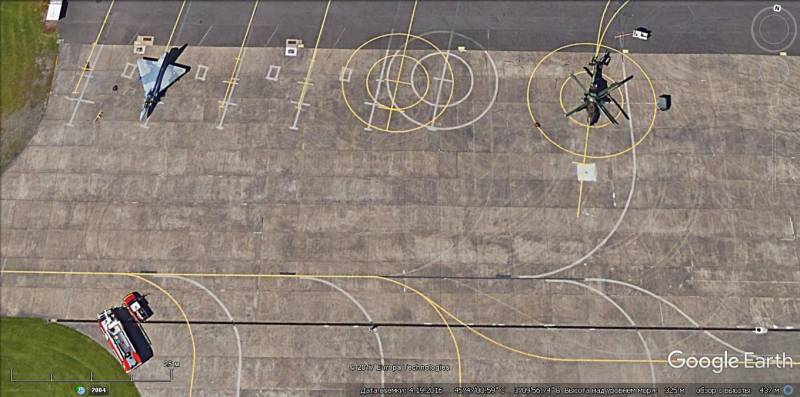
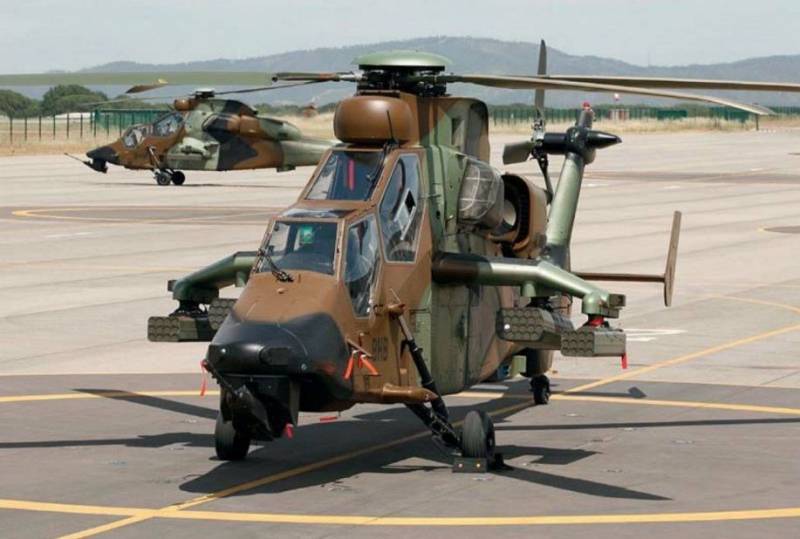
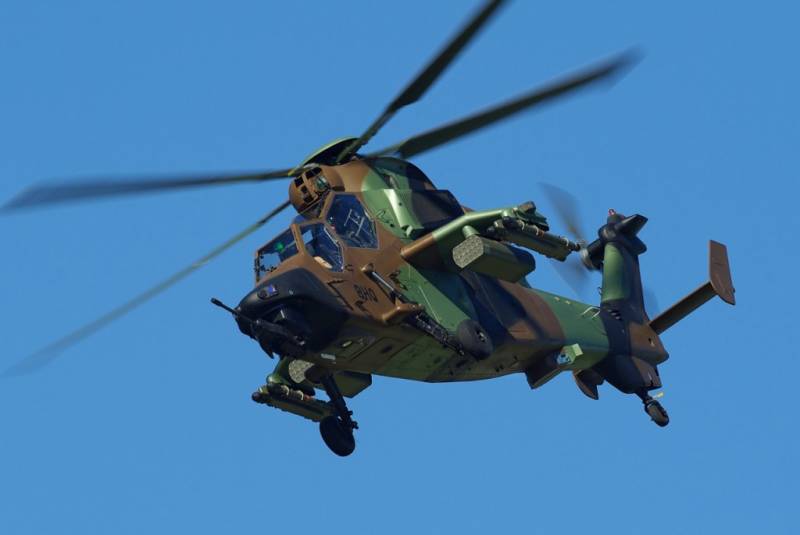

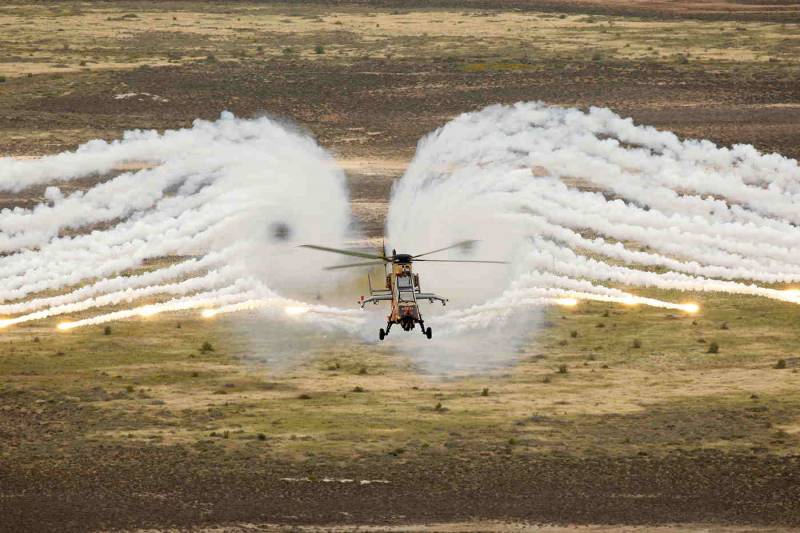
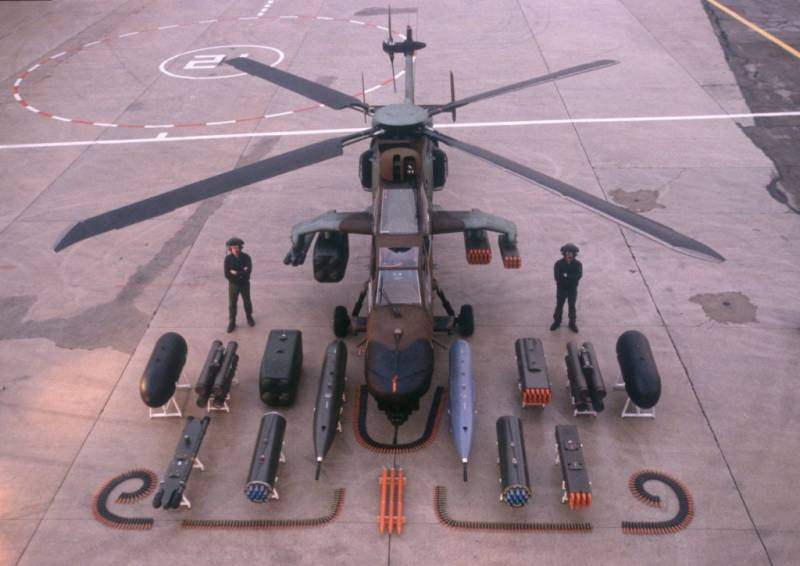
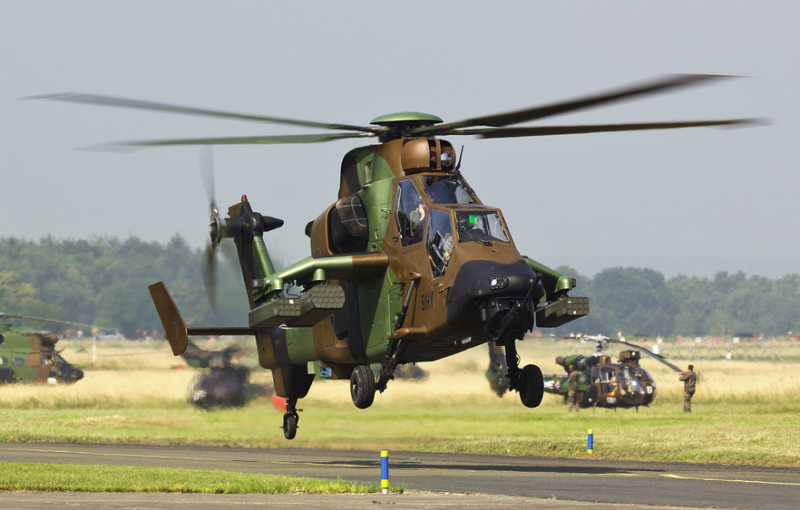
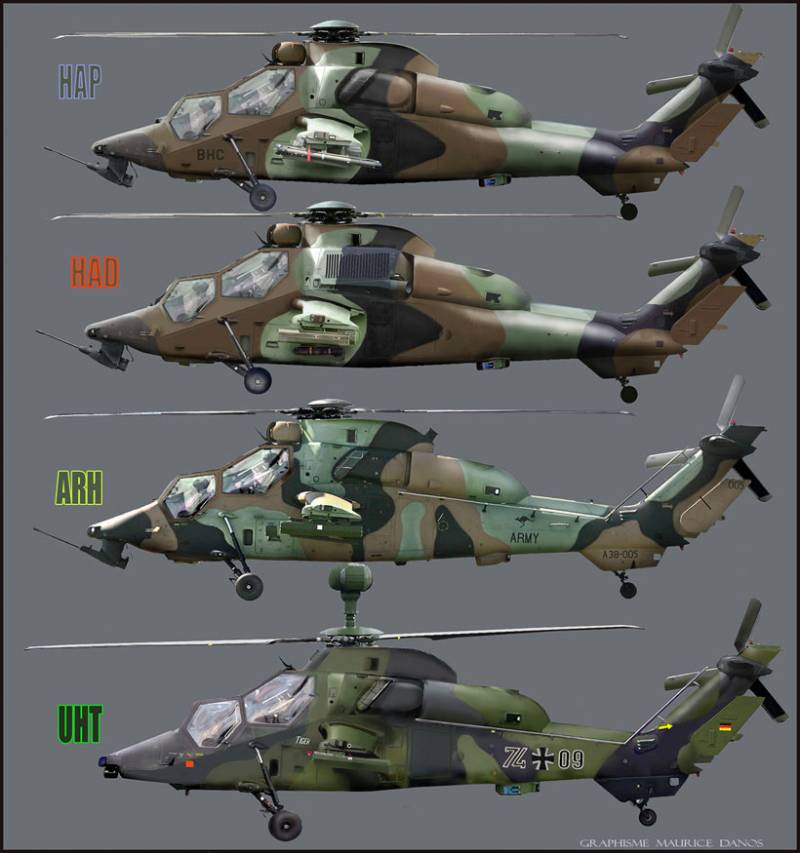
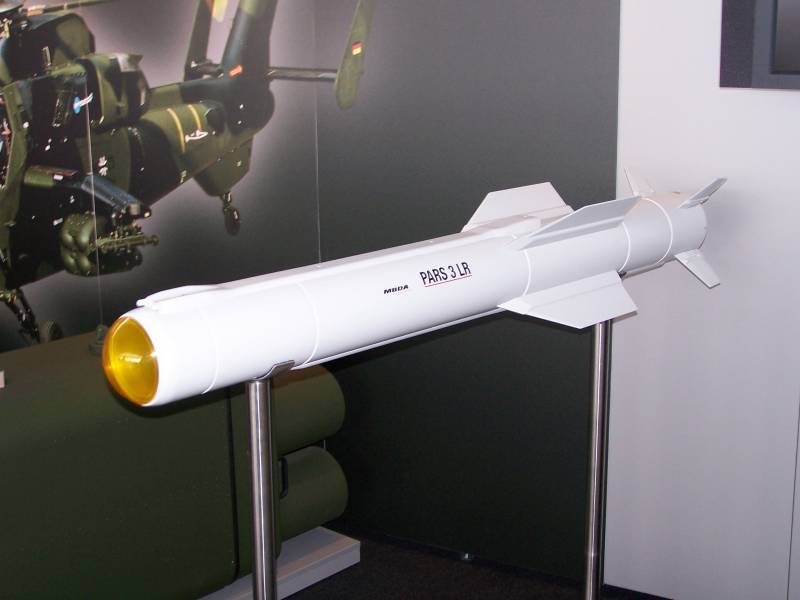
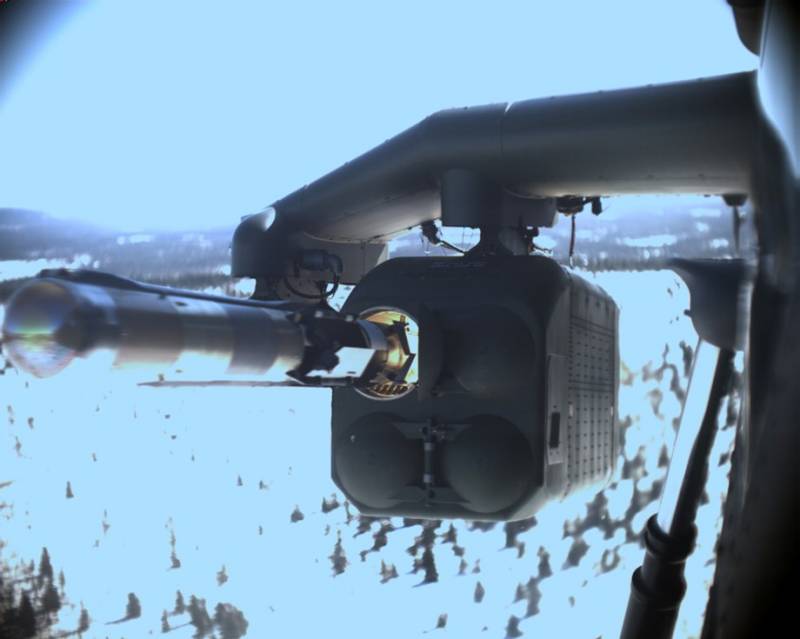
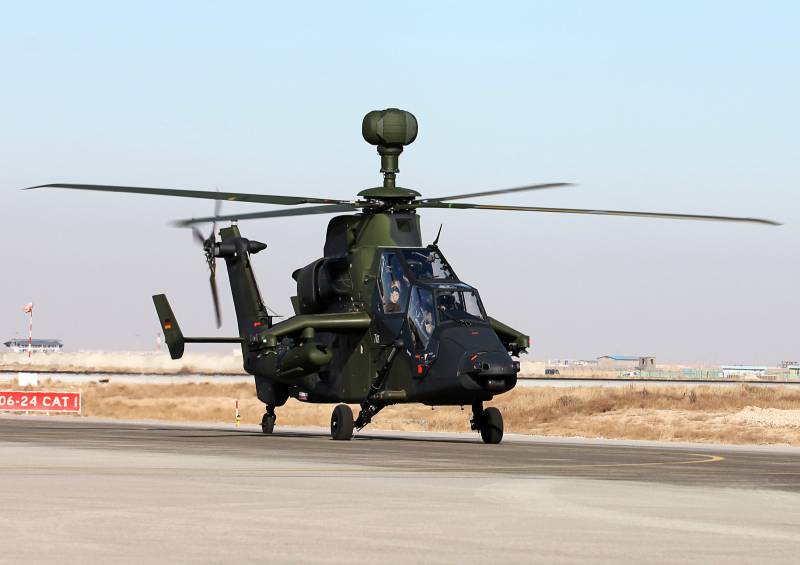
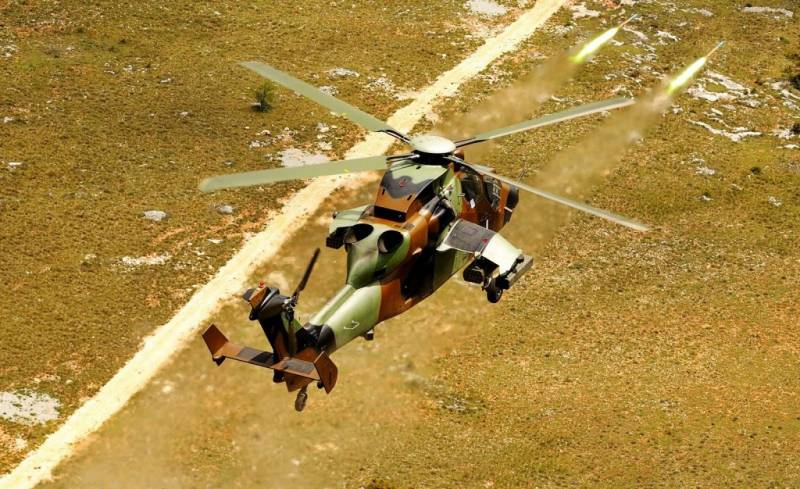
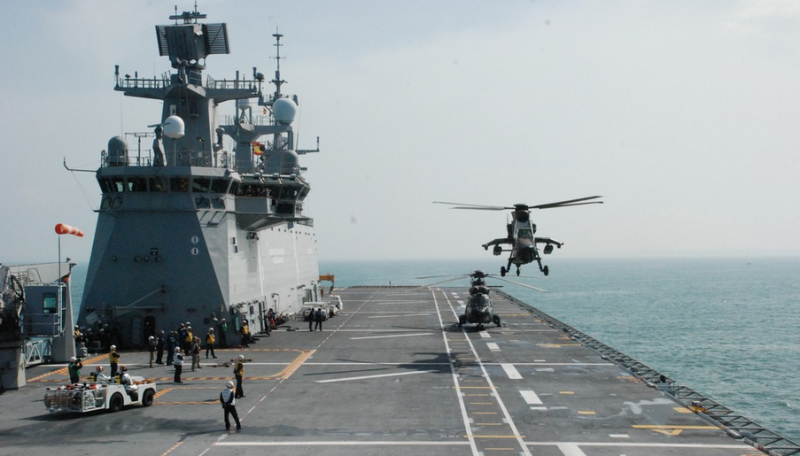
Information